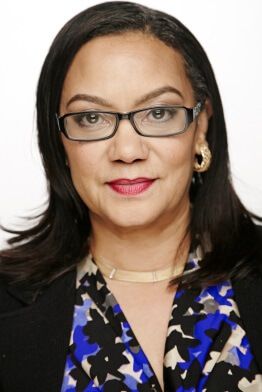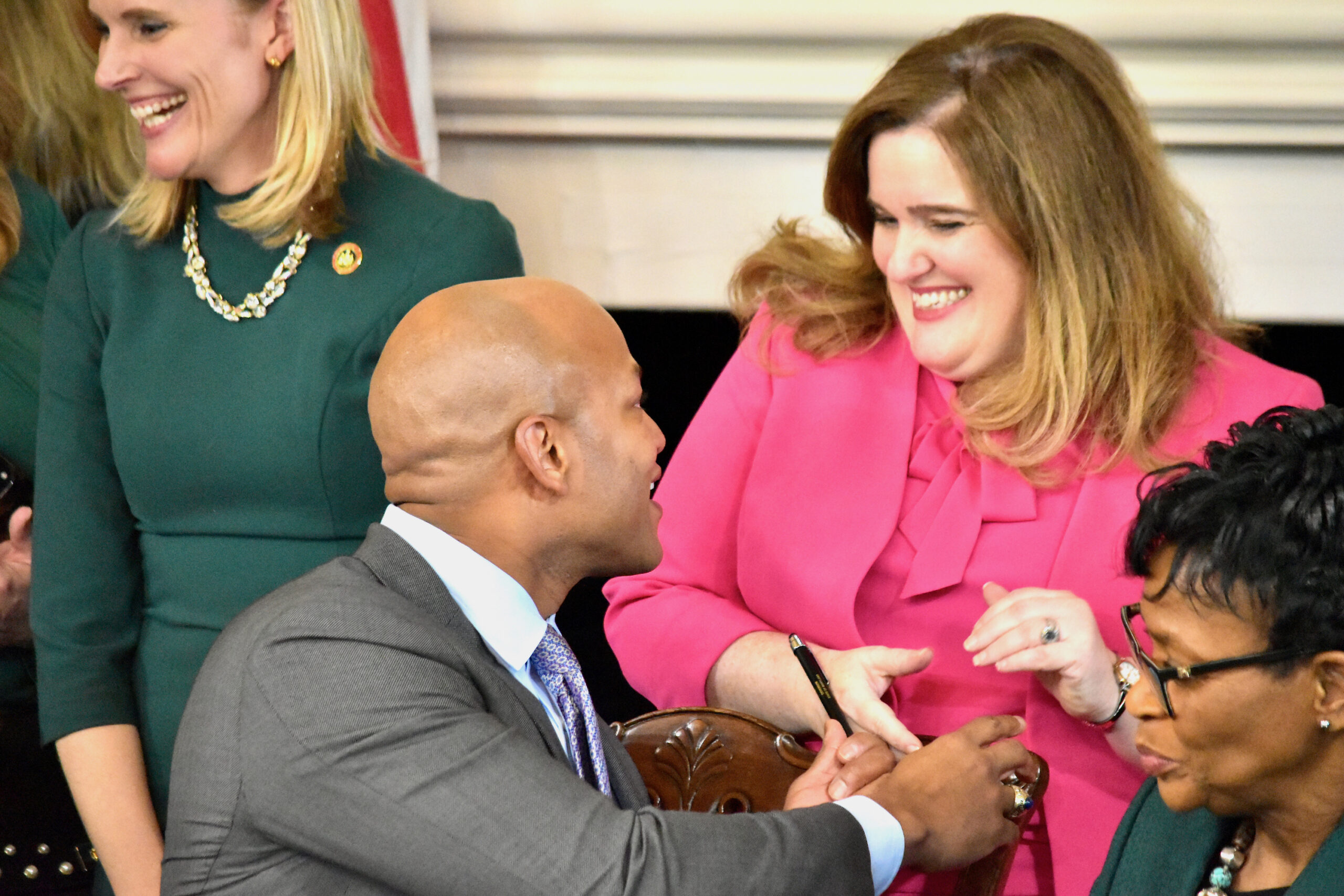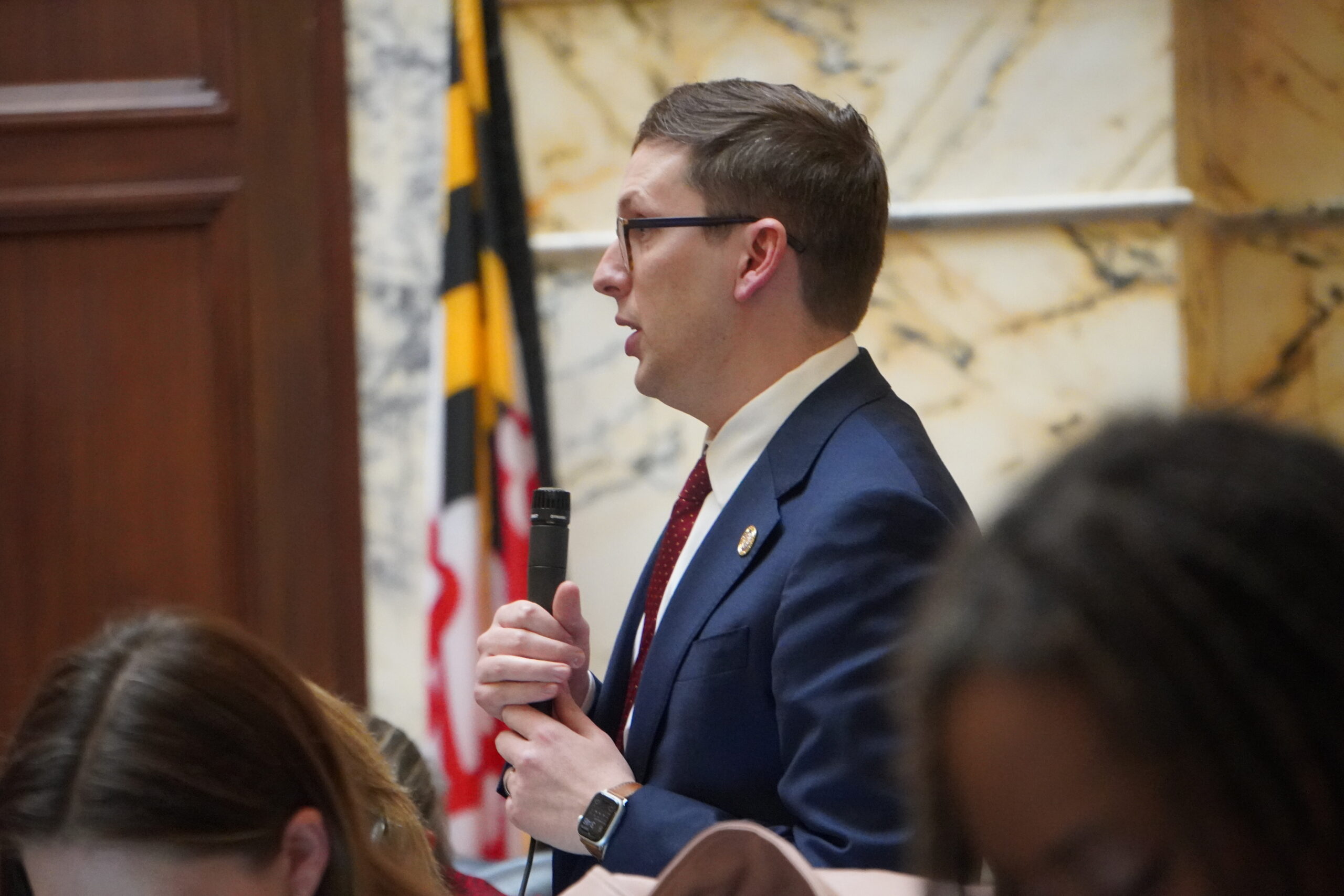
The water utility that serves the Washington, D.C., suburbs was justified in spending ratepayer funds to upgrade its logo and “branding,” the head of the agency told a member of the General Assembly, because the quality of service her employees provides isn’t fully appreciated by the public.
In an Aug. 14 letter to Del. Marc Korman (D-Montgomery), Carla A. Reid, the general manager of the Washington Suburban Sanitary Commission, said that through “customer analytics,” the utility determined that “the public — our customers — did not truly grasp what we did and had a negative perception of WSSC Water. The need for a brand refresh emerged as a solution to these challenges.”
Last month, Korman and other officials complained that the bi-county utility was planning to spend nearly $900,000 to change its name to WSSC Water, adopt a new logo and drop its current slogan, “Where Water Matters,” in favor of “Delivering the Essential.”
Korman also sought greater insight into the agency’s just-adopted Fiscal Year 2020 budget, noting that its second biggest expense, after debt service, falls under the nebulous category “All Other.”
In her letter, Reid said adding the word “water” to its name is part of a “trend for public utilities to drop antiquated words like sanitation, sewer and authority from their name to help the public to understand who they are and what they do.”
The WSSC has served Prince George’s and Montgomery counties for 101 years. This is just the fourth time the utility has changed its logo, Reid said.
She said her agency has a proud tradition as “a leader and innovator” — and that more modern “branding” will help WSSC Water as it rolls out new products, such as “biosolids” (organic matter recycled from sewage, used mostly in agriculture), which Washington, D.C.’s utility, DC Water, sells under the trademark “Bloom.”
While the WSSC is a monopoly provider of water and sewer service, Reid acknowledged, “a key driver for changing our name, logo and visual identify is our desire to enter into a competitive market where we can utilize our skills to generate revenue.”
In a memo to Korman, the agency’s chief financial officer, Patricia Colihan, defended the method in which WSSC categorizes its spending on overhead, which — at $187.4 million for FY 2020 — represents 18.4% of its overall expenditures, she wrote.
Having consulted an independent analysis of agencies similar in size to WSSC, “the Commission appeared to be at or below the median when compared to our peers,” her memo stated.
WSSC hired an outside communications and public relations firm last year to conduct market research and provide suggestions on new branding, at a cost of $360,000. The firm’s recommendation for a new name, Unified Water, was rejected by WSSC’s commissioners.
After deciding on “WSSC Water” and creating a new logo in-house, the utility then adopted a three-year plan to update signage, at cost of $491,000.
In an email to Maryland Matters on Thursday, WSSC spokesman Chuck Brown said the utility has decided to drop the FY 2021 and FY 2022 spending on new signs, reducing its future expenditures from $491,000 to $141,000.
Korman called that “the latest good move” by the agency. “They have had to continually pull back on this over the process,” he added.
Still, the lawmaker remains unconvinced that spending hundreds of thousands of dollars on a new name and slogan is warranted.
“What the response fails to do is address the key issue of how spending ratepayer funds on rebranding fits in with the statutory mission of the monopoly water utility,” he wrote.
He said that if the agency wants to improve its image, “a better use of time and funds would be focusing on infrastructure and switching to a fixed time billing system, rather than fiddling with signs on buildings or logos on uniforms.”
Korman said he remains “concerned” about “the mindset of the monopoly water utility’s treatment of the ratepayers’ dollars.”
In her letter to Korman, Reid noted that he played a leading role in “the breakthrough state funding package for WMATA,” the agency that runs the D.C. region’s transit system. “We welcome the opportunity to work with you to create a similar funding package for WSSC Water,” she wrote.
Reid did not provide specifics on how much state funding the agency is looking for or how it would be used, and a spokesman did not immediately respond to a request for more information.
This is not the first time that negative publicity led WSSC to scale back its initial plans. When the agency built its current headquarters in Laurel, in 1992, the design called for its large blue water-drop logo to appear atop the building. After critics began calling the 14-story structure “the Taj Mahal,” one of the giant logos was eliminated to save money. Northbound motorists on Interstate 95 pass the empty space on the building’s upper floors to this day.




 Creative Commons Attribution
Creative Commons Attribution